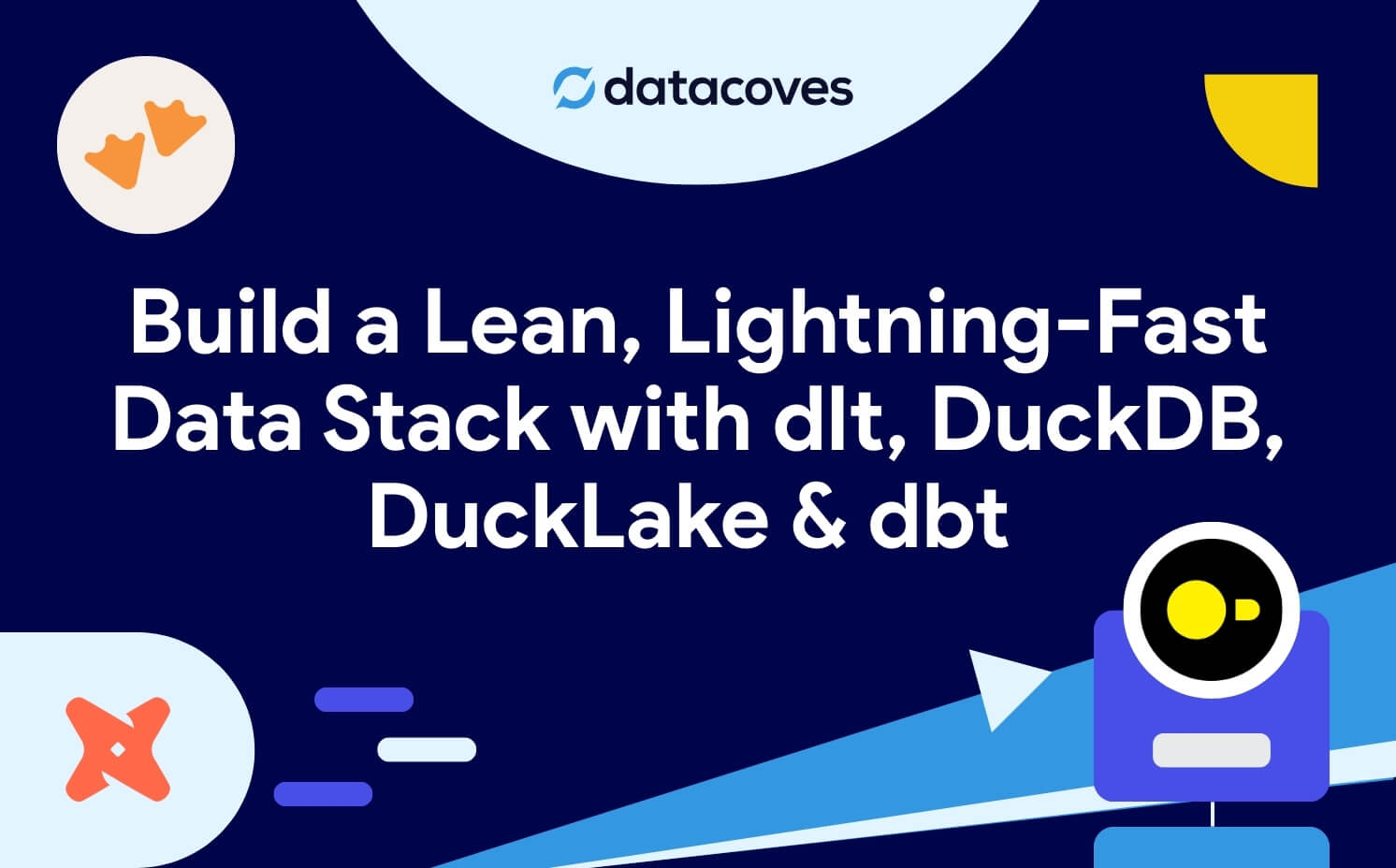You now know what dbt (data build tool) is all about. You are being productive, but you forgot what `dbt build` does or you forgot what the @ dbt graph operator does. This handy dbt cheat sheet has it all in one place.
dbt cheat sheet - Updated for dbt 1.8
With the advent of dbt 1.6, we updated the awesome dbt cheat sheet created originally by Bruno de Lima
We have also moved the dbt jinja sheet sheet to a dedicated post.
This reference summarizes all the dbt commands you may need as you run your dbt jobs or study for your dbt certification.
If you ever wanted to know what the difference between +model and @model is in your dbt run, you will find the answer. Whether you are trying to understand dbt graph operators or what the dbt retry command does, but this cheat sheet has you covered. Check it out below.
Primary dbt commands
These are the principal commands you will use most frequently with dbt. Not all of these will be available on dbt Cloud
| dbt development commands |
| dbt build |
This command will load seeds, perform snapshots, run models, and execute tests |
| dbt compile |
Generates executable SQL code of dbt models, analysis, and tests and outputs to the target folder |
| dbt docs |
Generates and serves documentation for the dbt project (dbt docs generate, dbt docs serve) |
| dbt retry |
Re-executes the last dbt command from the node point of failure. It references run_results.json to determine where to start |
| dbt run |
Executes compiled SQL for the models in a dbt project against the target database |
| dbt run-operation |
Is used to invoke a dbt macro from the command line. Typically used to run some arbitrary SQL against a database. |
| dbt seed |
Loads CSV files located in the seeds folder into the target database |
| dbt show |
Executes sql query against the target database and without materializing, displays the results to the terminal |
| dbt snapshot |
Executes "snapshot" jobs defined in the snapshot folder of the dbt project |
| dbt source |
Provides tools for working with source data to validate that sources are "fresh" |
| dbt test |
Executes singular and generic tests defined on models, sources, snapshots, and seeds |
dbt Command arguments
The dbt commands above have options that allow you to select and exclude models as well as deferring to another environment like production instead of building dependent models for a given run. This table shows which options are available for each dbt command
| dbt command arguments |
| dbt build |
--select / -s, --exclude, --selector, --resource-type, --defer, --empty, --full-refresh |
| dbt compile |
--select / -s, --exclude, --selector, --inline |
| dbt docs generate |
--select / -s, --no-compile, --empty-catalog |
| dbt docs serve |
--port |
| dbt ls / dbt list |
--select / -s, --exclude, --selector, --output, --output-keys, --resource-type |
| dbt run |
--select / -s, --exclude, --selector, --resource-type, --defer, --empty, --full-refresh |
| dbt seed |
--select / -s, --exclude, --selector |
| dbt show |
--select / -s, --inline, --limit |
| dbt snapshot |
--select / -s, --exclude, --selector |
| dbt source freshness |
--select / -s, --exclude, --selector |
| dbt source |
--select / -s, --exclude, --selector, --output |
| dbt test |
--select / -s, --exclude, --selector, --defer |
dbt selectors
By combining the arguments above like "-s" with the options below, you can tell dbt which items you want to select or exclude. This can be a specific dbt model, everything in a specific folder, or now with the latest versions of dbt, the specific version of a model you are interested in.
| dbt node selectors |
| tag |
Select models that match a specified tag |
| source |
Select models that select from a specified source |
| path |
Select models/sources defined at or under a specific path. |
| file / fqn |
Used to select a model by its filename, including the file extension (.sql). |
| package |
Select models defined within the root project or an installed dbt package. |
| config |
Select models that match a specified node config. |
| test_type |
Select tests based on their type, singular or generic, data, or unit (unit tests are available only in dbt 1.8) |
| test_name |
Select tests based on the name of the generic test that defines it. |
| state |
Select nodes by comparing them against a previous version of the same project, which is represented by a manifest. The file path of the comparison manifest must be specified via the --state flag or DBT_STATE environment variable. |
| exposure |
Select parent resources of a specified exposure. |
| metric |
Select parent resources of a specified metric. |
| result |
The result method is related to the state method described above and can be used to select resources based on their result status from a prior run. |
| source_status |
Select resource based on source freshness |
| group |
Select models defined within a group |
| access |
Selects models based on their access property. |
| version |
Selects versioned models based on their version identifier and latest version. |
dbt graph operators
dbt Graph Operator provide a powerful syntax that allow you to hone in on the specific items you want dbt to process.
| dbt graph operators |
| + |
If "plus" (+) operator is placed at the front of the model selector, + will select all parents of the selected model. If placed at the end of the string, + will select all children of the selected model. |
| n+ |
With the n-plus (n+) operator you can adjust the behavior of the + operator by quantifying the number of edges to step through. |
| @ |
The "at" (@) operator is similar to +, but will also include the parents of the children of the selected model. |
| * |
The "star" (*) operator matches all models within a package or directory. |
Project level dbt commands
The following commands are used less frequently and perform actions like initializing a dbt project, installing dependencies, or validating that you can connect to your database.
| project level dbt commands |
| dbt clean |
By default, this command deletes contents of the dbt_packages and target folders in the dbt project |
| dbt clone |
In databases that support it, can clone nodes (views/tables) to the current dbt target database, otherwise it creates a view pointing to the other environment |
| dbt debug |
Validates dbt project setup and tests connection to the database defined in profiles.yml |
| dbt deps |
Installs dbt package dependencies for the project as defined in packages.yml |
| dbt init |
Initializes a new dbt project and sets up the users's profiles.yml database connection |
| dbt ls / dbt list |
Lists resources defined in a dbt project such as modem, tests, and sources |
| dbt parse |
Parses and validates dbt files. It will fail if there are jinja and yaml errors in the project. It also outputs detailed timing info that may be useful when optimizing large projects |
| dbt rpc |
DEPRECATED after dbt 1.4. Runs an RPC server that compiles dbt models into SQL that can be submitted to a database by external tools |
dbt command line (CLI) flags
The flags below immediately follow the dbt command and go before the subcommand e.g. dbt <FLAG> run
Read the official dbt documentation
| dbt CLI flags (logging and debugging) |
| -d, --debug / --no-debug |
Display debug logging during dbt execution useful for debugging and making bug reports. Not to be confused with the dbt debug command which tests database connection. |
| --log-cache-events / --no-log-cache-events |
Enable verbose logging for relational cache events to help when debugging. |
| --log-format [text|debug|json|default] |
Specify the format of logging to the console and the log file. |
| --log-format-file [text|debug|json|default] |
Specify the format of logging to the log file by overriding the default format |
| --log-level [debug|info|warn|error|none] |
Specify the severity of events that are logged to the console and the log file. |
| --log-level-file [debug|info|warn|error|none] |
Specify the severity of events that are logged to the log file by overriding the default log level |
| --log-path PATH |
Configure the 'log-path'. Overrides 'DBT_LOG_PATH' if it is set. |
| --print / --no-print |
Outputs or hides all {{ print() }} statements within a macro call. |
| --printer-width INTEGER |
Sets the number of characters for terminal output |
| -q, --quiet / --no-quiet |
Suppress all non-error logging to stdout Does not affect {{ print() }} macro calls. |
| --use-colors / --no-use-colors |
Specify whether log output is colorized in the terminal |
| --use-colors-file / --no-use-colors-file |
Specify whether log file output is colorized |
As a managed dbt Core solution, the Datacoves platform simplifies the dbt Core experience and retains its inherent flexibility. It effectively bridges the gap, capturing many benefits of dbt Cloud while mitigating the challenges tied to a pure dbt Core setup. See if Datacoves dbt pricing is right for your organization or visit our product page.
Please contact us with any errors or suggestions.



-Photoroom.jpg)




